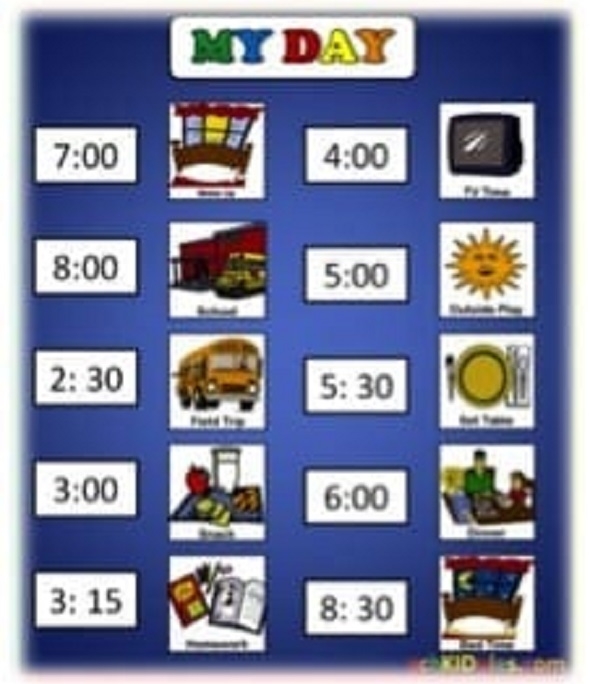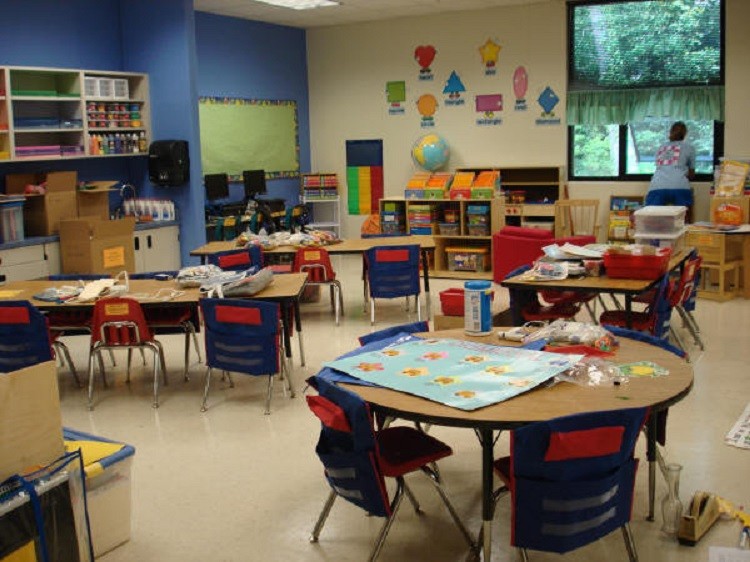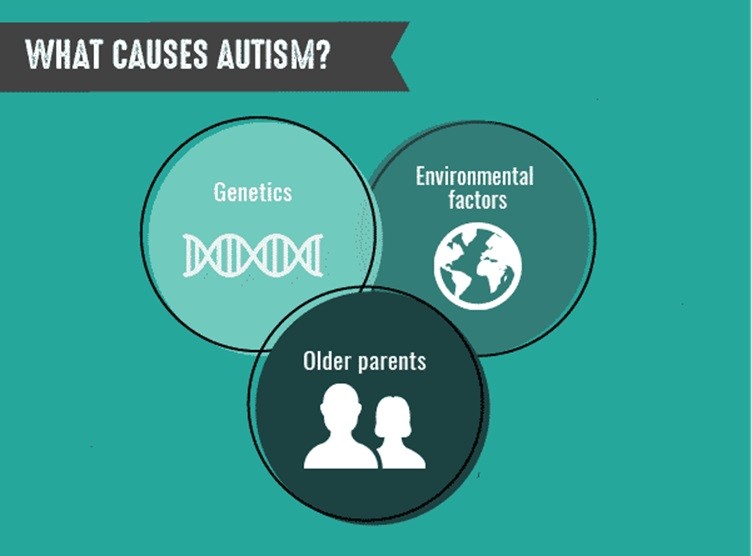Observational Learning and Children with Autism
One of the main obstacles to learning that many children with autism face is a lack of observational learning skills. Observational learning requires the coordination of cognitive functions and the processing of social information. Cognitive functions include the domains of perception, memory, learning, attention, decision-making, and language abilities. We will explore the reasoning behind why children with autism struggle to learn by using observation.
In this article, we’re going to discuss:
- What Is Observational Learning In ABA Therapy?
- The Four Prerequisites for Observational Learning
- Observational Learning Examples
- Influences on Observational Learning
- Uses for Observational Learning
- What Learning Style Do Autistic Children Have?
- What Are Some Challenges that Children with Autism Face When Learning?
- In What Kind of Learning Environments are Autistic Children Most successful?
- Tips to Support Observational Learning at Home

What Is Observational Learning in ABA Therapy?
Observational learning is a powerful method of acquiring new skills by watching and modeling another person’s behavior, emotional expressions, or attitudes. This form of learning plays a vital role in Applied Behavior Analysis (ABA) and is especially relevant for children with autism, who may face unique challenges in learning through imitation.
According to renowned psychologist Albert Bandura, observational learning doesn’t require direct imitation. A child can learn simply by observing, even if they don’t immediately replicate the behavior. This concept is central to Bandura’s Social Learning Theory, which emphasizes the importance of social context and modeling in human development.
The Four Prerequisites for Observational Learning
For observational learning to occur effectively, four key conditions must be met: attention, retention, reproduction, and motivation. These prerequisites are especially important when designing ABA interventions for children with autism.
Attention
To learn from a model, a child must first pay attention. Factors like fatigue, illness, or sensory distractions can reduce attention and make learning difficult. The characteristics of the model also matter; children are more likely to focus on individuals who are engaging, familiar, or socially reinforced. For example, athletes, teachers, or older siblings often serve as strong models. However, attention can also be misdirected; children may imitate negative behaviors if they see those behaviors rewarded, such as gang members gaining status or money.
Retention
Retention refers to the ability to remember and mentally process the behavior that was observed. For children with autism, this step can be challenging due to difficulties with memory, sequencing, and cognitive processing. While some children may imitate immediately, others may need visual supports, repetition, or task chaining to retain and recall the behavior effectively.
Reproduction
Reproduction involves the physical and mental ability to perform the behavior. A child may observe a basketball player dunking but lack the strength or coordination to replicate it. Similarly, a young horse might try to jump a creek after watching another horse but fail due to developmental limitations. In ABA therapy, reproduction is supported through prompting, practice, and skill-building strategies tailored to the child’s developmental level.
Motivation
Motivation is the driving force behind imitation. Without a reason to act, even a well-observed and remembered behavior may not be reproduced. Bandura identified several motivational factors, including:
- Seeing the model receive positive reinforcement
- Anticipating rewards or incentives
- Avoiding punishment or negative consequences
In ABA, motivation is often enhanced through positive reinforcement, such as praise, tokens, or access to preferred activities. Conversely, if a child observes a model being punished, they may be less likely to imitate that behavior.

Observational Learning Examples
The following are instances that demonstrate observational learning has occurred.
- A child watches their parent fold the laundry. They later pick up some clothing and imitate folding the clothes.
- A young couple goes on a date to an Asian restaurant. They watch other diners in the restaurant eating with chopsticks and copy their actions to learn how to use these utensils.
- A child watches a classmate get in trouble for hitting another child. They learn from observing this interaction that they should not hit others.
- A group of children plays hide-and-seek. One child joins the group and is not sure what to do. After observing the other children play, they quickly learn the basic rules and join in.
Influences on Observational Learning
Bandura’s research indicates that there are various factors that can enhance the likelihood of behavior being imitated. We are more likely to imitate:
- Individuals who are perceived as warm and nurturing
- Individuals who receive rewards for their behavior
- Individuals who hold positions of authority in our lives
- Individuals who share the same age, gender, and interests as us
- Individuals we look up to or who hold a higher social standing
- When we have been rewarded for imitating the behavior in the past
- When individuals have a lack of confidence in their own knowledge or abilities
- When the situation is unclear or unfamiliar

Uses for Observational Learning
Observational learning can be used in the real world in a number of different ways. Some examples include:
- Learning new behaviors: Observational learning is commonly employed as a practical method for teaching individuals new skills. This may involve children observing their parents completing a task or students watching a teacher demonstrate a concept.
- Strengthening skills: Observational learning is an important method to reinforce and enhance behaviors. For instance, when a student witnesses another student being rewarded for raising their hand in class, they are more inclined to raise their hand themselves when they have a question.
- Minimizing negative behaviors: Observational learning has a significant impact on reducing undesirable or negative behaviors. For instance, witnessing another student receiving a reprimand for not completing a task on time may increase the likelihood of one finishing their own work promptly.
What learning style do autistic children have?
They tend to have strong visual skills because autistic children tend to focus on details, rather than the whole. Also, autistic children are often visual learners. This might be because visual information lasts longer and is more concrete than spoken and heard information.
What are some challenges that children with autism face when learning?
School activities that may be particularly challenging for students with autism spectrum disorder (ASD), include social interactions, noisy or disordered environments, intense sensory stimulation, and changes in expected routines.
Social interactions can be difficult for children with autism, since they may have difficulty understanding non-verbal communication cues such as facial expressions and body language. They may also find it difficult to interpret or respond to the tone of someone’s voice or the inflections that are used when speaking.
Noisy or disordered environments can also be very confusing for students with autism. They may not be able to block out background noise well and may become easily overwhelmed.
Intense sensory stimulation can be a major challenge for children with autism, as they may be easily overwhelmed by loud noises, bright lights, and other environmental factors that can cause an overstimulation response. Observational learning is one strategy that can help children with autism cope with intense sensory stimulation. Through observational learning, the child’s behavior is modeled after another person who is better able to tolerate the sensory changes in expected routines.
In what kind of learning environments are autistic children most successful?
Children with autism thrive in a structured and predictable environment. Establish routines early on and keep them as consistent as possible. In a world that’s ever-changing, routine and structure provide great comfort and support to a child on the autism spectrum.
Tips to Support Observational Learning at Home
Supporting observational learning in children with autism starts with intentional modeling and structured routines. Here are practical, ABA-informed strategies parents can use at home:
- Model behaviors clearly and consistently
Demonstrate tasks slowly and with exaggerated movements. Narrate your actions aloud to help your child focus on both visual and verbal cues, a key step in building attention and retention. - Use visual supports and PECS
Pair your modeling with visual aids like charts, photos, or the Picture Exchange Communication System (PECS). PECS helps children with limited verbal communication express needs and follow modeled routines more independently. - Practice in predictable routines using a behavior chain
Choose familiar activities like brushing teeth or setting the table. Break these into smaller steps using a behavior chain, and teach them sequentially with:- Forward chaining: Start with the first step and build forward.
- Backward chaining: Start with the final step to help your child experience success early and stay motivated.
- Celebrate small imitations with positive reinforcement
When your child imitates a modeled behavior, even partially, offer positive reinforcement like praise, tokens, or access to a favorite activity. Reinforcement increases the likelihood that the behavior will be repeated. - Use ABA strategies like HOH prompting and fading
HOH prompting (hand-over-hand guidance) can help your child physically experience a modeled action. Over time, reduce support using fading techniques to encourage independent learning and build motivation.
Observational learning is a powerful tool for children with autism, especially when supported by consistent modeling, structured routines, and ABA strategies like prompting, chaining, and reinforcement. By creating a home environment rich in visual cues, positive feedback, and step-by-step guidance, parents can help their children build confidence, independence, and meaningful social connections, one small imitation at a time.
Let LeafWing Center partner with you to ensure that your child achieves their maximum potential. Leafwing takes pride in building a rapport between the learner and the therapy team, especially at the beginning of the ABA therapy program. The staff should work on establishing a positive relationship with your child. This is important not only in the beginning but throughout the program. During the first few weeks, there will be a lot of play and conversation with your child to make them feel comfortable and have fun with the Behavior technician. This creates positive experiences and improves learning rates for better outcomes.
For more information regarding this topic, we do encourage you to speak with an ABA technician or email us at info@leafwingcenter.org
Related Glossary Terms
- Backward Chaining
- Behavior Chain
- Fading
- Forward Chaining
- HOH prompting
- Picture Exchange Communication System (PECS)
- Positive Reinforcement
Other Related Articles
- Why Does ABA Help Children With Autism?
- How To Start ABA Therapy
- How Do Attention And Learning Rates Play A Role In A Child’s ABA Program
Frequently asked questions about ABA therapy
What is ABA Therapy used for?
ABA-based therapy can be used in a multitude of areas. Currently, these interventions are used primarily with individuals living with ASD; however, their applications can be used with individuals living with pervasive developmental disorders as well as other disorders. For ASD, it can be used in effectively teaching specific skills that may not be in a child’s repertoire of skills to help him/her function better in their environment whether that be at home, school, or out in the community. In conjunction with skill acquisition programs, ABA-based interventions can also be used in addressing behavioral excesses (e.g., tantrum behaviors, aggressive behaviors, self-injurious behaviors). Lastly, it can also be utilized in parent/caregiver training.
In skill acquisition programs, a child’s repertoire of skills is assessed in the beginning phase of the services in key adaptive areas such as communication/language, self-help, social skills, and motor skills as well. Once skills to be taught are identified, a goal for each skill is developed and then addressed/taught by using ABA-based techniques to teach those important skills. Ultimately, an ABA-based therapy will facilitate a degree of maintenance (i.e., the child can still perform the learned behaviors in the absence of training/intervention over time) and generalization (i.e., the learned behaviors are observed to occur in situations different from the instructional setting). These two concepts are very important in any ABA-based intervention.
In behavior management, the challenging behaviors are assessed for their function in the beginning phase of the services. In this phase, the “why does this behavior happen in the first place?” is determined. Once known, an ABA-based therapy will be developed to not just decrease the occurrence of the behavior being addressed, but also teach the child a functionally-equivalent behavior that is socially-appropriate. For example, if a child resorts to tantrum behaviors when she is told she cannot have a specific item, she may be taught to accept an alternative or find an alternative for herself. Of course, we can only do this up to a certain point—the offering of alternatives. There comes a point when a ‘no’ means ‘no’ so the tantrum behavior will be left to run its course (i.e., to continue until it ceases). This is never easy and will take some time for parents/caregivers to get used to, but research has shown that over time and consistent application of an ABA-based behavior management program, the challenging behavior will get better.
In parent training, individuals that provide care for a child may receive customized “curriculum” that best fit their situation. A typical area covered in parent training is teaching responsible adults pertinent ABA-based concepts to help adults understand the rationale behind interventions that are being used in their child’s ABA-based services. Another area covered in parent training is teaching adults specific skill acquisition programs and/or behavior management programs that they will implement during family time. Other areas covered in parent training may be data collection, how to facilitate maintenance, how to facilitate generalization of learned skills to name a few.
There is no “one format” that will fit all children and their families’ needs. The ABA professionals you’re currently working with, with your participation, will develop an ABA-based treatment package that will best fit your child’s and your family’s needs. For more information regarding this topic, we encourage you to speak with your BCBA or reach out to us at info@leafwingcenter.org.
Who Can Benefit From ABA Therapy?
There is a common misconception that the principles of ABA are specific to Autism. This is not the case. The principles and methods of ABA are scientifically backed and can be applied to any individual. With that said, the U.S. Surgeon General and the American Psychological Association consider ABA to be an evidence based practice. Forty years of extensive literature have documented ABA therapy as an effective and successful practice to reduce problem behavior and increase skills for individuals with intellectual disabilities and Autism Spectrum Disorders (ASD). Children, teenagers, and adults with ASD can benefit from ABA therapy. Especially when started early, ABA therapy can benefit individuals by targeting challenging behaviors, attention skills, play skills, communication, motor, social, and other skills. Individuals with other developmental challenges such as ADHD or intellectual disability can benefit from ABA therapy as well. While early intervention has been demonstrated to lead to more significant treatment outcomes, there is no specific age at which ABA therapy ceases to be helpful.
Additionally, parents and caregivers of individuals living with ASD can also benefit from the principles of ABA. Depending on the needs of your loved one, the use of specified ABA techniques in addition to 1:1 services, may help produce more desirable treatment outcomes. The term “caregiver training” is common in ABA services and refers to the individualized instruction that a BCBA or ABA Supervisor provides to parents and caregivers. This typically involves a combination of individualized ABA techniques and methods parents and caregivers can use outside of 1:1 sessions to facilitate ongoing progress in specified areas.
ABA therapy can help people living with ASD, intellectual disability, and other developmental challenges achieve their goals and live higher quality lives.
What does ABA Therapy look like?
Agencies that provide ABA-based services in the home-setting are more likely to implement ABA services similarly than doing the same exact protocols or procedures. Regardless, an ABA agency under the guidance of a Board-Certified Behavior Analyst follows the same research-based theories to guide treatment that all other acceptable ABA agencies use.
ABA-based services start with a functional behavior assessment (FBA). In a nutshell, a FBA assesses why the behaviors may be happening in the first place. From there, the FBA will also determine the best way to address the difficulties using tactics that have been proven effective over time with a focus on behavioral replacement versus simple elimination of a problem behavior. The FBA will also have recommendations for other relevant skills/behaviors to be taught and parent skills that can be taught in a parent training format to name a few. From there, the intensity of the ABA-based services is determined, again, based on the clinical needs of your child. The completed FBA is then submitted to the funding source for approval.
One-on-one sessions between a behavior technician and your child will start once services are approved. The duration per session and the frequency of these sessions per week/month will all depend on how many hours your child’s ABA services have been approved for—usually, this will be the number recommended in the FBA. The sessions are used to teach identified skills/behaviors via effective teaching procedures. Another aspect of ABA-based services in the home-setting is parent training. Parent training can take many forms depending on what goals have been established during the FBA process. The number of hours dedicated for parent training is also variable and solely depends on the clinical need for it. If a 1:1 session is between a behavior technician and your child, a parent training session or appointment is between you and the case supervisor and with and without your child present, depending on the parent goal(s) identified. Parent training service’s goal is for you to be able to have ample skills/knowledge in order for you to become more effective in addressing behavioral difficulties as they occur outside of scheduled ABA sessions. Depending on the goals established, you may be required to participate in your child’s 1:1 sessions. These participations are a good way for you to practice what you have learned from the case supervisor while at the same time, having the behavior technician available to you to give you feedback as you practice on those new skills.
As mentioned in the beginning, no two ABA agencies will do the same exact thing when it comes to providing ABA services; however, good agencies will always base their practice on the same empirically-proven procedures.
How do I start ABA Therapy?
In most cases, the first item required to start ABA therapy is the individual’s autism spectrum disorder (ASD) diagnosis report. This is typically conducted by a doctor such as a psychiatrist, psychologist, or a developmental pediatrician. Most ABA therapy agencies and insurance companies will ask for a copy of this diagnosis report during the intake process as it is required to request an ABA assessment authorization from the individual’s medical insurance provider.
The second item required to start ABA therapy is a funding source. In the United States, and in cases where Medi-Cal or Medicare insurances are involved, there is a legal requirement for ABA services to be covered when there is a medical necessity (ASD diagnosis). Medi-Cal and Medicare cover all medically necessary behavioral health treatment services for beneficiaries. This typically includes children diagnosed with ASD. Since Applied Behavior Analysis is an evidence based and effective treatment for individuals with ASD, it is considered a covered treatment when medically necessary. In many cases, private insurance will also cover ABA services when medically necessary, however in these cases, it is best to speak directly with your medical insurance provider to determine the specifics of the coverage and to ensure that ABA is in fact, a covered benefit. Additionally, some families opt to pay for ABA services out-of-pocket.
The next step to starting ABA therapy is to contact an ABA provider whom you are interested in working with. Depending on your geographic location, ABA agencies exist in many cities across the United States. Your insurance carrier, local support groups, and even a thorough online search can help you find reputable and properly credentialed ABA agencies near you. Our organization, LeafWing Center, is based in southern California and is recognized for aiding people with ASD achieve their goals with the research based on applied behavior analysis.
Once you have identified the ABA provider with whom you wish to work, they should help you facilitate the next steps. These will include facilitating paperwork and authorizations with your funding source. Once the assessment process begins, a BCBA (Board Certified Behavior Analyst) or qualified Program Supervisor should get in contact with you to arrange times in which interviews with parents/caregivers and observations of your loved one can be conducted. This will help in the process of gathering important clinical information so that with your collaboration, the most effective treatment plans and goals can be established for your loved one. This process is referred to as the Functional Behavior Assessment (FBA) and is elaborated on in different blog posts on our website. With regard as to what can be expected once ABA therapy begins, please read our blog post titled: When You Start an ABA program, What Should You Reasonably Expect from Your Service Provider?






























